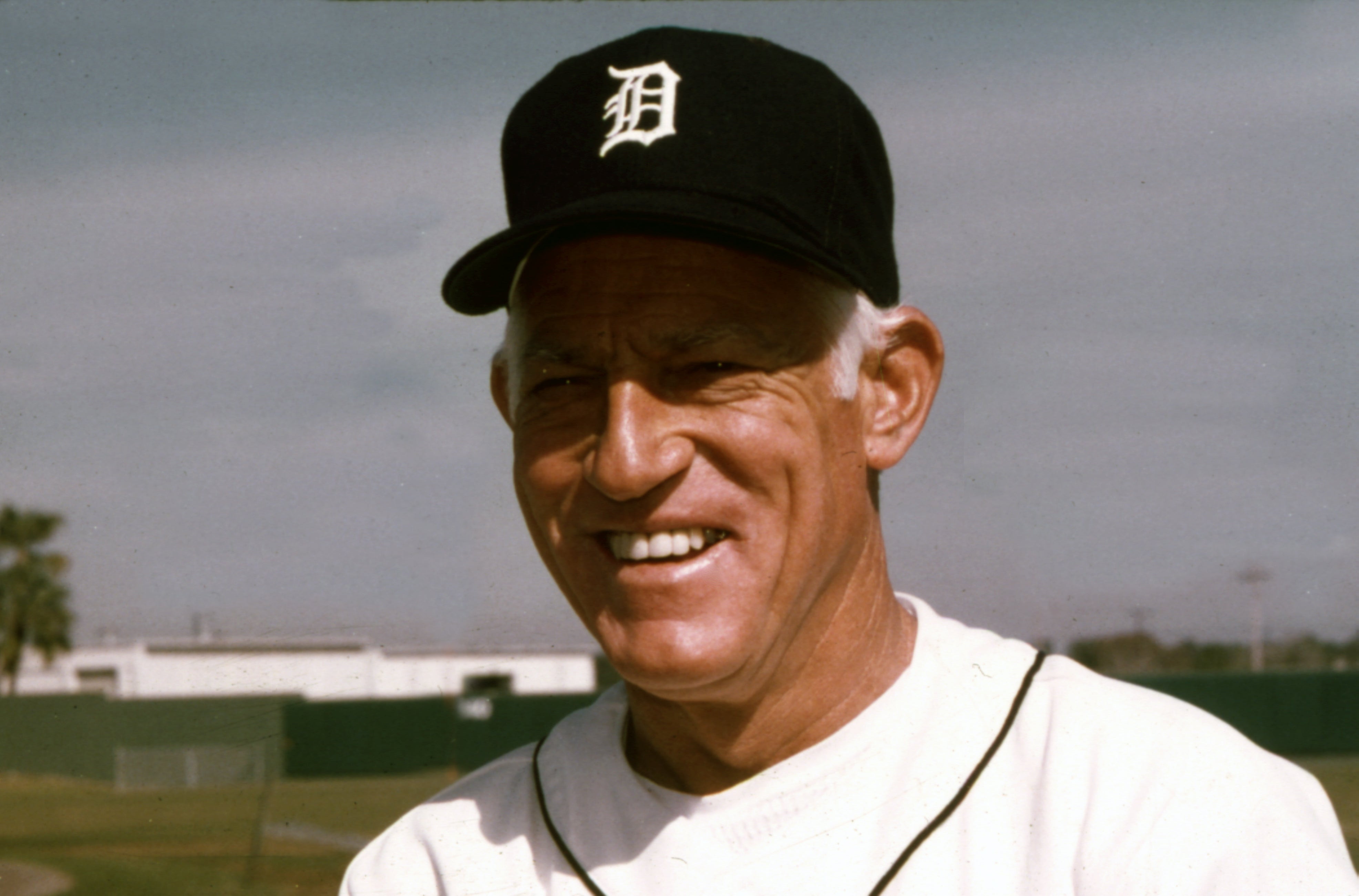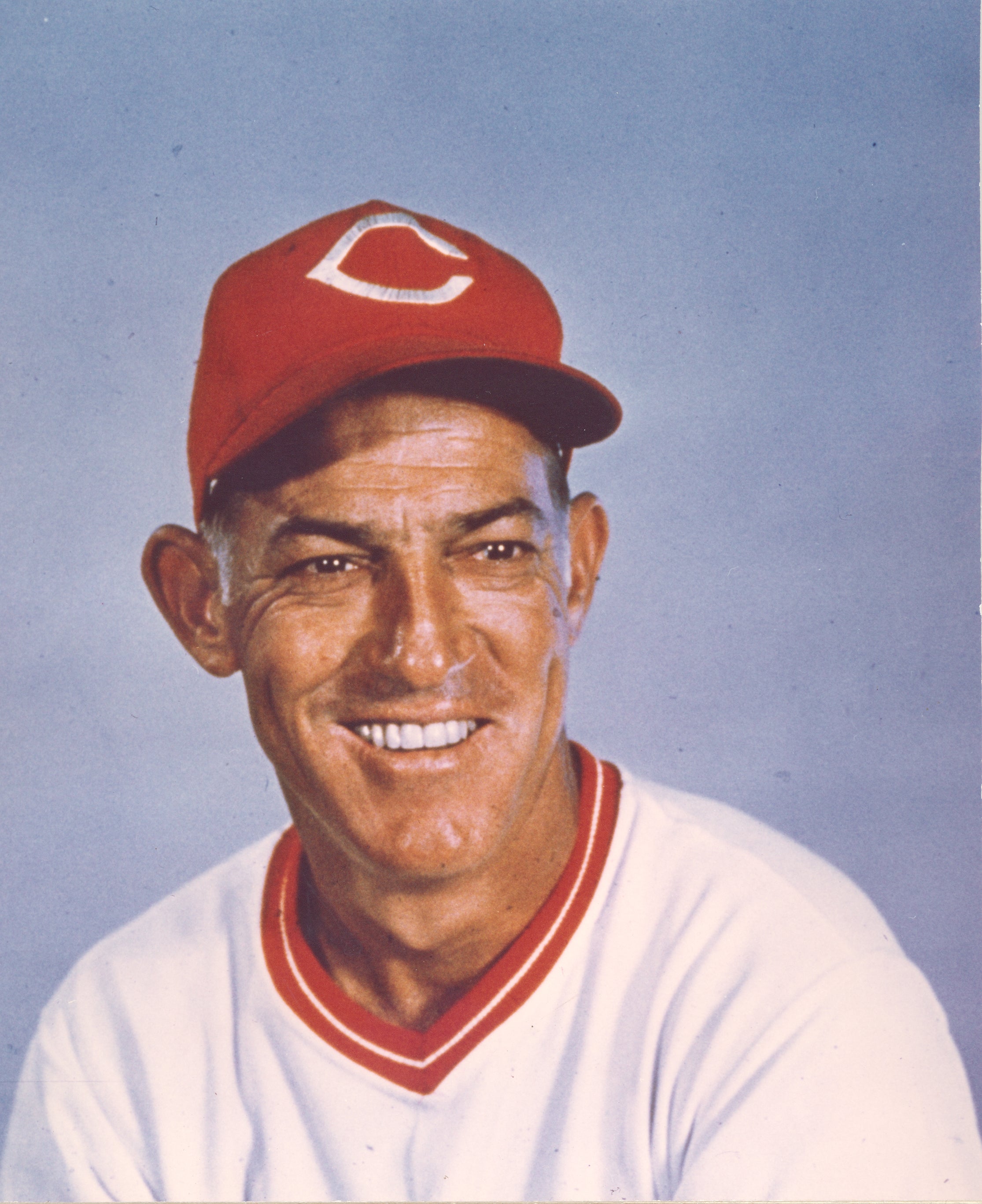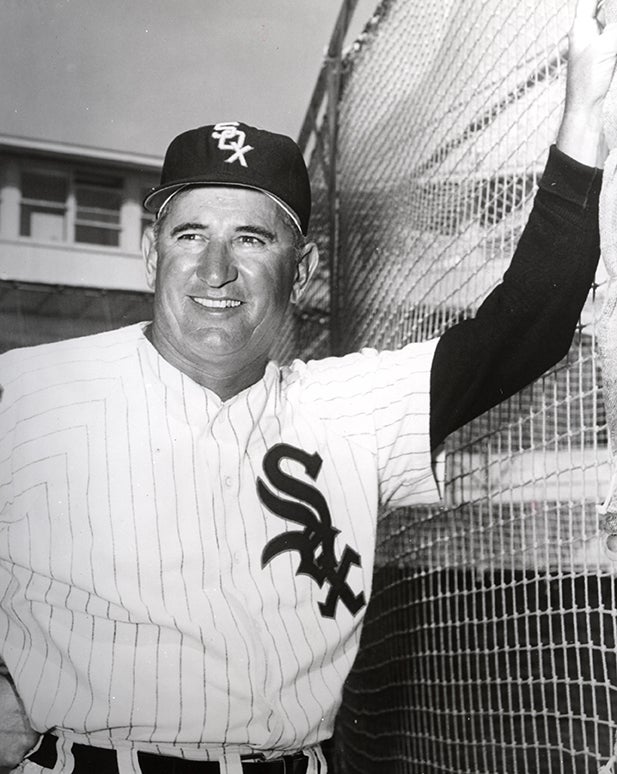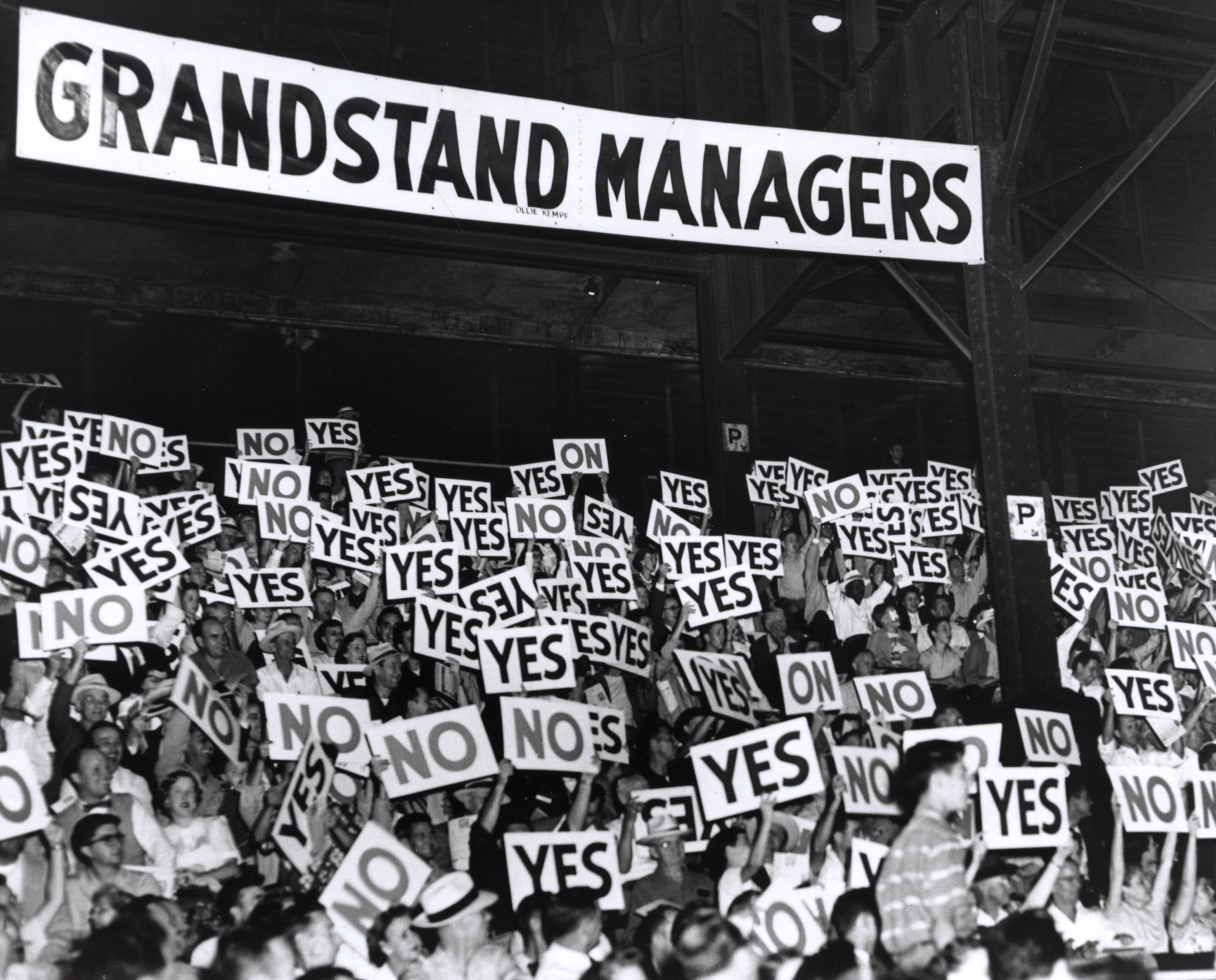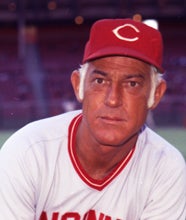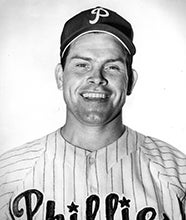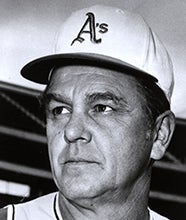- Home
- Our Stories
- Anderson’s playing career put him on the path to the Hall
Anderson’s playing career put him on the path to the Hall
Sparky Anderson began his big league career by setting a record he did not want.
But a decade later, Anderson began his second act in baseball – one that proved that he belonged in the big leagues.
Official Hall of Fame Apparel
Proceeds from online store purchases help support our mission to preserve baseball history. Thank you!
On Dec. 23, 1958, Anderson was traded by the Dodgers to the Phillies in exchange for Jim Golden, Rip Repulski and Gene Snyder. After six seasons in the minor leagues, Anderson was going to get his chance at the major league level.
“I’ve been working on this one since the season ended,” Phillies general manager Roy Hamey told the Philadelphia Inquirer following the trade. “Anderson is the best available second baseman in the minors who is ready for the majors.
“He’s definitely a (Eddie) Stanky-type, he’s a take-charge guy.”
The Phillies finished last in the National League in 1958 with a record of 69-85, and Hamey was determined to rebuild his roster. Anderson, meanwhile, was caught in a logjam in the talent-rich Dodgers system – having spent the last three seasons either in the International League or Pacific Coast League.
In 1958, Anderson set an IL standard for second basemen with a .988 fielding percentage. He hit .269 at the plate and finished second in the league’s Most Valuable Player voting.
The feisty Anderson – who stood 5-foot-9 and weighed 170 pounds – had long defied the odds in baseball.
Born Feb. 22, 1934, in Bridgewater, S.D., Anderson grew up in Southern California and signed with the Dodgers in 1953. By 1955, Anderson had advanced to Double-A Fort Worth – where he played on a team with future big league managers Dick Williams, Danny Ozark, Norm Sherry and Maury Wills. But after advancing to Triple-A Montreal in 1956, Anderson was unable to crack the Dodgers’ big league roster.
“He always seems to be in the right spot at the right time,” said future Hall of Famer Joe Gordon, who managed the PCL’s San Francisco Seals in 1957 when Anderson was with Los Angeles. “Before he makes a move, he takes into consideration the pitcher, the hitter and the situation. That shows he has good baseball sense.”
The Phillies wasted to time assigning Anderson the starting second base job for 1959. Anderson recorded a single and an RBI in his first big league game on April 10, 1959, hitting leadoff for the Phillies against the Reds and Don Newcombe. Anderson’s eighth-inning single scored Chico Fernández and proved to be the difference as Cincinnati rallied for a run against Robin Roberts in the top of the ninth before Roberts locked up Philadelphia’s 2-1 win.
Anderson would play in 152 of the Phillies’ 155 games that year – including one tie – becoming the 50th player in MLB history to appear in 150 games in his first season in the big leagues.
But while Anderson showed a steady glove – committing just 12 errors en route to the .984 fielding percentage – he struggled at the plate, hitting .218 with a .249 slugging percentage.
Anderson spent the next four seasons playing for Toronto in the International League, never to return to the majors as a player. He is the only player in big league history to appear in at least 150 games in his first year and never play in another season.
But in 1964, Anderson was named Toronto’s manager. The next season, he joined the Cardinals’ organization – where he established himself as a big league managerial prospect.
After a season coaching with the expansion San Diego Padres, Anderson – at 35 years of age – was named the Reds manager for the 1970 season. He would go on to win two World Series in Cincinnati and another with Detroit, finishing his 26-year run with a record of 2,194-1,834, five pennants and three World Series titles.
Anderson, who passed away on Nov. 4, 2010, was elected to the Hall of Fame in 2000.
Craig Muder is the director of communications for the National Baseball Hall of Fame and Museum



